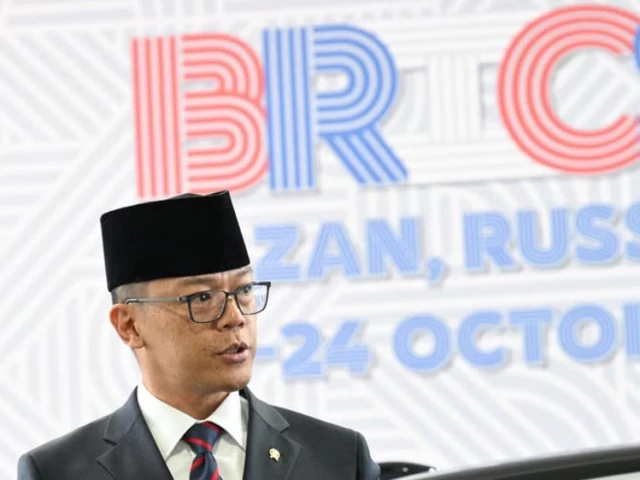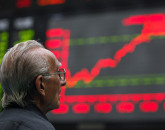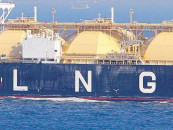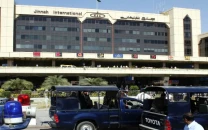Indonesia joins BRICS: A new era?
Development to enhance inter-BRICS trading, investments, and capacity building

BRICS continues to grow as Indonesia, the world's fourth most populous nation with a strong economic footing, has become its full member.
Anadolu Ajansi quoted Indonesian Foreign Minister Sugiono as saying, "As a BRICS member, Indonesia wants to become a bridge-builder for the interests of developing economies and the Indo-Pacific nations. We will continue to remain active in preventing further escalations to geo-economic and geopolitical rivalry."
Brazil is the current chair of the bloc, which has 11 full members, including China, Egypt, Russia, India, South Africa, Saudi Arabia, the United Arab Emirates, Ethiopia, Iran, and Indonesia. Indonesia's BRICS membership comes at a time when a great power rivalry is at play in Southeast Asia, where the US and China have worked to exert their respective influence.
Regional Expert and Centre for South Asia & International Studies (CSAIS) Islamabad Executive Director Dr Mehmoodul Hassan Khan stated that the Republic of Indonesia is the only country to attain full membership status of BRICS from January 1, 2025. This highlights its strategic value in terms of further economic integration, expansion, qualitative industrial cooperation, modernisation, and digitalisation.
With Indonesia's membership, BRICS now has brighter prospects for strategic expansion in the ASEAN (Association of South East Asian Countries) region, one of the largest trading and economic cooperation partnerships globally. This development will further enhance inter-BRICS trading volumes, economic and commerce activities, joint ventures, investments, and capacity building.
"It is estimated that Indonesia will benefit in areas such as the development of the blue economy, metal and mining cooperation, digitalisation, cooking oil export, hybrid agriculture, and infrastructure development for its new capital, Nusantara," Khan noted.
Now, BRICS has a larger consumer market for its agri-based exports, more manpower to achieve economic stability and sustainability, and productive channels for green technologies and artificial intelligence. Additionally, BRICS members gain geopolitical and geo-economic clout in global politics and governance, advocating for a just, free, and fair world.
This expansion represents value addition for BRICS in sectors such as the blue economy, financial integration, tourism, hospitality, and Islamic banking, further supporting its economic objectives. It is also expected to contribute significantly to energy and food security in the future.
BRICS now comprises roughly half of the global population and more than 41% of world GDP. The bloc includes the biggest producers of key commodities like oil, gas, grains, meat, and minerals. Additionally, nine of the 20 most populous countries are now part of BRICS, with a combined population of approximately 4 billion.
BRICS members are global leaders in producing essential commodities such as cereals, meat, crude oil, natural gas, and strategic minerals like iron ore, copper, and nickel, creating numerous mutually beneficial opportunities.
It is hoped that BRICS will continue to foster mutually beneficial opportunities and strengthen economic partnerships, broaden infrastructure and financing options, advocate for the Global South, and attract investments.
In 2024, Indonesia's trade with BRICS nations reached approximately $150 billion, reflecting the bloc's importance as a trading partner. Expanding this trade is critical to achieving Indonesia's export growth target for its 8% GDP growth objective. This development also creates a strategic cushion for other ASEAN countries to consider joining BRICS in the future.
Senior Economic Analyst Dr Sabur Ghayur said that Indonesia's membershipgiven its status as the largest Muslim-majority country, with a GDP of $1.4 trillion (16th largest globally), export earnings of $350 billion, and its role as a key tourist destinationis significant. As a member of the G20 and a founding member of ASEAN, Indonesia's integration strengthens the bloc and broadens trade and investment ties within Southeast Asia. It is worth noting that ASEAN is also joined by China, South Korea and Japan, thus making ASEAN+3. This is then a very important East and SEA countries group to be reckoned with.
Indonesia's inclusion positions BRICS as the largest South-South bloc globally, comprising developing countries from all continents except Australia and the Pacific Islands.
"Will BRICS, accounting for a quarter of the global economy and half of the global population, become a significant force? For now, probably not," Ghayur observed. He attributed this to global realities, including competition from other intercontinental blocs such as the Asia Pacific Economic Forum (APEC) and the Asia-Europe Meeting (ASEM).
APEC, with 21-member countries including the USA, China, ASEAN nations, Japan, Australia, and New Zealand, commands 62% of global GDP and about half of global trade. APEC's key achievements include easier business practices within the bloc and a largely operational single-window system.
Similarly, ASEM represents 63% of global GDP, 75% of global tourists, and 68% of global trade. With its focus on culture, education, and people-to-people connections, ASEM's Asia-Europe Foundation (ASEF) underscores its integration efforts. While APEC leadership meets annually, the summits take place every two years.
In contrast, BRICS accounts for a quarter of global GDP (with China alone accounting for 17%) and 19% of global exports (with China contributing 11%). Despite its growing membership, BRICS currently relies on the US dollar for around 80% of global trade.
Nevertheless, the bloc's expansion, including Indonesia's membership, signals potential to disrupt the global economic order and challenge the dominance of the US dollar in the future.
THE WRITER IS A STAFF CORRESPONDENT.



















COMMENTS
Comments are moderated and generally will be posted if they are on-topic and not abusive.
For more information, please see our Comments FAQ